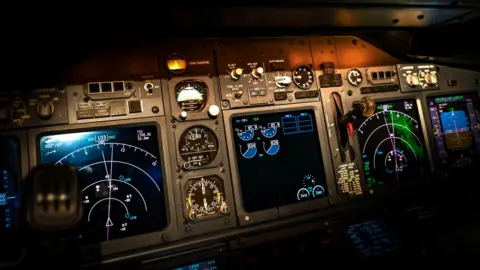Investigators are grappling with unsettling findings from the Air India Flight 171 crash investigation, which resulted in the deaths of 260 people in June. Shortly after takeoff, both fuel-control switches on the Boeing 787 Dreamliner were inexplicably moved to the "cut-off" position, leading to a total power loss. This action is typically reserved for landing scenarios, raising significant questions about the sequence of events.
Cockpit voice recordings reveal a haunting exchange between the pilots where one queried why the other “did the cut-off” switch. The other pilot denied doing so, leaving an ambiguous situation in a time of crisis. At the time the incident occurred, the co-pilot was at the controls while the captain monitored the situation. There was an attempt to reverse the cut-off action; however, by then, one engine had begun to regain thrust, while the other had not yet recovered power, resulting in the flight crashing into a heavily populated area in Ahmedabad.
The preliminary report, which spans 15 pages, reveals that the Boeing 787-engineering design included fuel control switches that should prevent accidental activation. A former air accident investigator noted that the switches' mechanism makes it “almost impossible” to cut off both engines with one hand, casting doubt on whether the action was intentional or accidental.
As questions mount, experts in aviation, such as Shawn Pruchnicki from Ohio State University, ponder the reasoning behind the abrupt fuel cut-off. The incident seems atypical, and many believe that the answer may lie within the cockpit voice recorder, which contains audio from pilot communications and ambient sounds during the flight.
The ongoing investigation is also looking into a troubling detail from past Federal Aviation Administration advisories regarding potential issues with fuel control switches, happened in December 2018. However, further scrutiny could be necessary, as some experts remain skeptical about the impact these advisories may have had on the crash.
Moreover, the aircraft was found equipped with a Ram Air Turbine (RAT), which deploys during engine failures to provide emergency power to critical systems. The presence of the RAT further indicated that both engines had failed, suggesting that the pilots’ attempts to recover were tragically too late.
Initial examinations cleared the pilots for flying, as they had passed breathalyser tests and had adequate rest. Still, investigators are adamant about deciphering what transpired in those moments leading to the disaster, emphasizing a critical need for cockpit video recordings to enhance safety in the future.
As the investigation continues, experts and authorities remain dedicated to uncovering the truth behind this tragic incident that continues to haunt the aviation community.





















